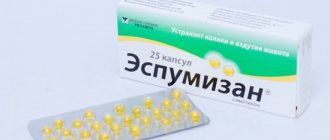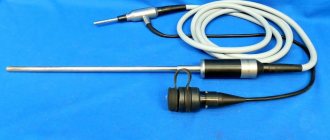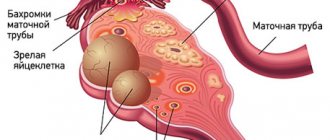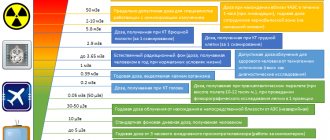Laparoscopy, which is performed in a medical setting, is a low-traumatic surgical procedure. Since a scalpel is not used, large incisions are not made, the time for regeneration of tissues and organs is greatly reduced. But on the other hand, the endoscopic method of surgery involves the injection of gas into the patient’s body so that it is possible to carry out the necessary manipulations in order to obtain a sufficient overview. And this affects the body and must be taken into account during the rehabilitation period.
The peculiarities of recovery after laparoscopy are primarily related to the fact that the patient often feels well within a few hours after the operation. However, this is not the case with all types of surgery; sometimes recovery can take weeks.
Causes of pus
Firstly, if you detect pus or discharge from the gums, you should immediately consult a doctor, as this is a direct signal that implant rejection has begun.
If this is not done, even greater complications may arise, which can lead to the structure falling out. Table 1. Causes of pus
| Causes | Peculiarities |
| Improper hygiene | Food particles or bacteria getting under the implant is the main reason for the appearance of purulent discharge. Therefore, after surgery, it is important to follow doctor’s instructions and carefully care for your oral cavity. This is not only about brushing your teeth twice a day, but also about professional hygiene. By the way, it is recommended to add special brushes or an irrigator to your home care. You can ask your hygienist about how to properly care for your implant. For example, our clinic offers a free hygiene lesson to everyone. |
| Individual characteristics of the body | Before surgery, the doctor always collects anamnesis and excludes contraindications for implantation. But it is difficult to predict how the body will react to a foreign body. If a patient experiences implant rejection due to an allergy to metal, then alternative methods of dental restoration should be chosen. |
| Doctor's mistakes |
|
| Patient errors | Violation of postoperative recommendations:
|
How to care for a suture after surgery
| BUY MEPIFORM PLASTIC |
- Suture during operations on the thyroid gland in St. Petersburg
- What is the Mepiform patch used for?
- How to use Mepiform silicone patch?
- Buy Mepiform patch
- Photo of the seam after applying the patch
Most of the operations performed at the North-Western Center for Endocrinology and Endocrine Surgery of the High Medical Technologies Clinic named after.
N.I. Pirogov St. Petersburg State University, are performed on the organs of the neck - the thyroid gland and parathyroid glands. In this type of operation, the skin suture is located in a place that is clearly visible, so the requirements for the cosmetic result of the operation are maximum. We use technologies that allow us to reduce the size of the suture (video-assisted operations) or move the suture to an inconspicuous place (endoscopic operations from the axillary approach), and at the same time we use proven and effective methods to improve the quality of the postoperative scar. The center's surgeons believe that the cosmetic result of the operation is as important as the clinical result. Over the years of our work, we have tested many different products aimed at improving cosmetic results. Experiments on animals were also used. Physiotherapeutic procedures were prescribed, gels, creams, plates, bandages and patches were used. The results were carefully evaluated, ineffective means were discarded (there were many of them), and eventually we came to the methods described below, which have become standard for us, since they have proven their real effectiveness.
Ethicon Dermabond Skin Adhesive
During an operation at the North-Western Center for Endocrinology and Endocrine Surgery of the High Medical Technologies Clinic named after. N.I. Pirogov St. Petersburg State University, a cosmetic suture is applied to the skin with an absorbable thread, after which the surface of the suture is covered with Ethicon Dermabond skin glue (USA). After drying, the glue forms a transparent, durable film on the surface of the seam, which protects the seam from moisture and air, ensuring healing under sterile conditions.
The use of glue provides patients with a number of important advantages: - the surface of the suture is clearly visible to both the patient and the operating surgeon, which allows for a quick assessment of the condition of the operation area; - no dressings required; — no need to “remove” the seam, i.e. there is no need to pull the thread used to stitch it out of the skin; — the patient can take water procedures immediately after surgery (usually we recommend starting to shower the next day after surgery).
| Applying skin glue to the seam | Appearance of a seam with glue applied |
The glue remains on the surface of the skin for 14-20 days, after which it comes off on its own. Already 2 weeks after the operation, you can remove the glue yourself - this does not cause any pain and is done very quickly.
Specialists at the Endocrine Surgery Center have been using Ethicon Dermabond adhesive for more than 10 years. Skin glue has proven itself well - its use allows you to raise the comfort of the operation to new heights.
The use of skin adhesive is standard at the Northwestern Center for Endocrinology and Endocrine Surgery. The adhesive is used for all patients and does not need to be purchased separately.
Silicone patch "Mepiform"
The second important “secret” that allows you to ensure the optimal cosmetic result of the operation is a silicone patch, specially designed to prevent the development of rough and unsightly scars.
The Mepiform patch was developed and manufactured by the Swedish company Mölnlycke Health Care, a world leader in the development of modern high-tech dressings.
The patch protects the postoperative suture from friction and damage, moisturizes the skin surface and provides optimal conditions for healing. When using a silicone patch, the skin seam is much thinner and less noticeable. The effectiveness of using the patch has been proven in a number of clinical trials (Maján JI et al. Evaluation of a self-adherent soft silicone dressing for the treatment of hypertrophic postoperative scars. Jo WC, Vol15, No 5 (2006), p.193-6, etc. .).
Mepiform is easy to use, fixed to the skin on its own using a layer of soft silicone (Safetac technology). Since the patch is flesh-colored, it is hardly noticeable on the skin. It is easy to use and does not interfere with daily activities.
The effectiveness of the Mepiform patch has been proven by the experience of use in thousands of patients at the North-Western Center for Endocrinology and Endocrine Surgery. Currently, the recommendation to use this patch is provided to all patients discharged from the center.
How to use the Mepiform patch
The most economical is the use of patch plates measuring 10x18 cm. In most cases, 4 patch patches are sufficient for a full course (only when performing lateral cervical lymph node dissection, when the length of the postoperative suture exceeds 10 cm, the need for a patch can be up to 6-7 patches).
It is necessary to start using the patch after the skin adhesive has been completely removed. A rectangular section is cut out from the patch plate with scissors, the length of which is 1 cm longer than the length of the skin suture, and the width is about 1.5 cm.
The patch is glued to the seam so that the entire seam line is covered with the patch. The patch must be worn constantly, day and night. The patch is removed only during water procedures (before a shower, the old patch is peeled off and thrown away; after washing, a new Mepiforma plate is glued to dry skin).
The patch is used until the skin scar has fully matured (if the color of the skin scar changes from pink to light gray, you can stop using the patch). On average, the period of use of the patch is from 3 to 6 months.
Where to buy the Mepiform patch
Patients purchase the Mepiform patch on their own. Unfortunately, Mepiform is quite difficult to buy in regular pharmacies, especially in the regions of our country (in St. Petersburg it can only be bought in a few pharmacies). In this regard, patients can purchase the patch at the advisory branches
Northwestern Center for Endocrinology and Endocrine Surgery at the following addresses:
- Kronverksky Ave., 31, tel. (5 minutes from Gorkovskaya metro station)
- st. Savushkina, 124, building 1, tel. (250 meters to the right from the Begovaya metro station)
You can also purchase the Mepiform patch from our partner, a company engaged in the supply of medical equipment and consumables in the North-West region, Scandimed LLC:
- st. Tsiolkovsky, 9, building 2, tel. to order Mepiform patches +7-921-428-93-98
The center guarantees the minimum price for Mepiform for its patients.
At the moment, the cost of a 10x18 cm patch is 1,290 rubles.
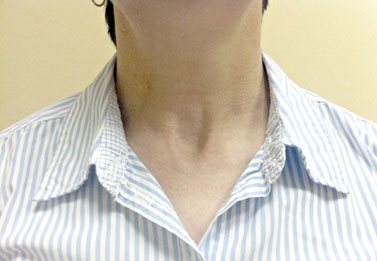
Appearance of the skin suture after applying the silicone patch
[to the beginning of the article]
To the section “Hospitalization in the center”
Symptoms of inflammation
The infection, entering the gum tissue, causes inflammation, which can be recognized by the following signs.
- Acute pain that can spread throughout the entire mouth;
- redness and swelling of the gums;
- bad breath;
- temperature increase;
- enlargement of the gum pocket;
- loosening of the implant;
- bloody discharge around the installed structure.
All these signs indicate that something went wrong during the operation and implantation of the implant. In any case, you should immediately contact your doctor.
Pus and peri-implantitis
Peri-implantitis is inflammation of the tissue around the implant. It appears due to the entry of pathogenic microorganisms into the space between the implant and the gum. If the development of the disease is not prevented at the initial stage, the process can become chronic.
In advanced cases, the gums become loose and a gum pocket forms around the implant, where food debris, microbes and saliva accumulate. All this provokes suppuration. Pus can be released either through a fistula that forms in the area of the implant, or directly from under the structure when pressing on the gum.

Causes of peri-implantitis
- Errors during the operation: penetration of bacteria during implantation of an artificial root, a large bed under the implant, an error when suturing the wound, the formation of a hematoma between the gum and the plug.
- Poor oral hygiene.
- The presence of an inflammatory process in neighboring teeth.
- Error in the manufacture of the prosthesis.
Treatment of complications
Depending on the stage of development of the disease, the following procedures are performed:
- surgical removal of a pus sac;
- antiseptic treatment of soft tissues;
- cleaning and removing the gum pocket;
- cleaning and disinfection of the implant;
- drug therapy.
If the inflammatory processes and suppuration progress, then perhaps the only solution will be to remove the implant.

Menstruation after laparoscopy
The menstrual cycle may not return to normal immediately after laparoscopic surgery. If manipulations have been carried out to remove fibroids or ovarian cysts, the first menstruation can be very heavy and “at the wrong time,” and sometimes, on the contrary, the cycle is delayed. After 2-3 cycles everything should return to normal. If heavy discharge does not stop or there is a change in the length of the cycle, you should consult your doctor and do an ultrasound. Perhaps the changes are caused by hormonal imbalance or inflammatory processes, endometriosis.
When can you get pregnant after laparoscopy?
Professor Ter-Hovakimyan Armen Eduardovich comments:
Further sexual activity depends on the specifics of the surgery. If the operation was aimed at eliminating infertility, you can try to get pregnant from the next cycle. If you have undergone surgery to remove cysts, you must use protection for 2 months. After removal of myomatous nodes, you need to protect yourself for about a year.

